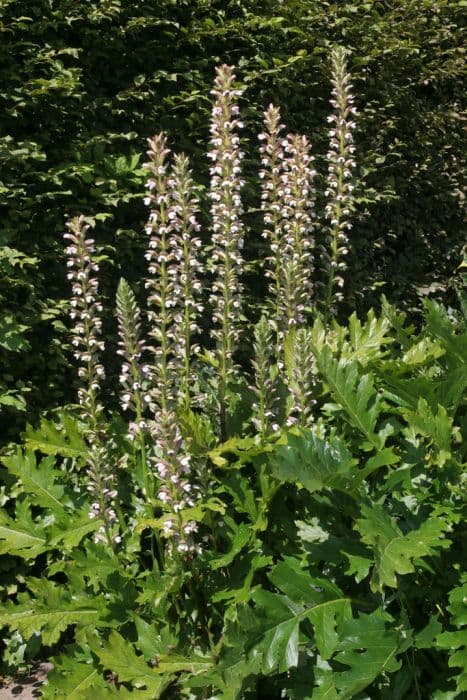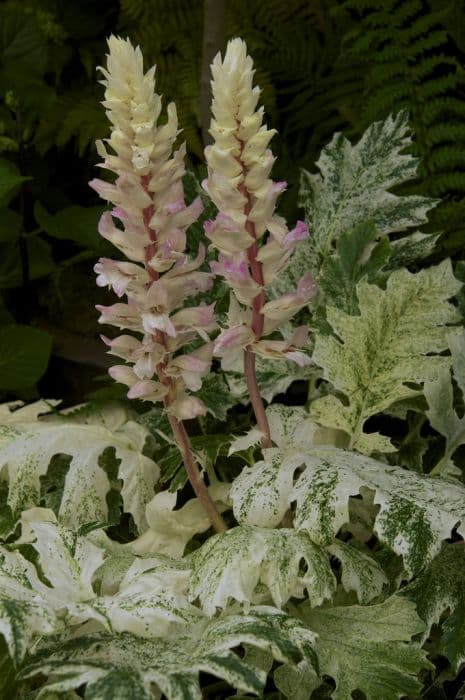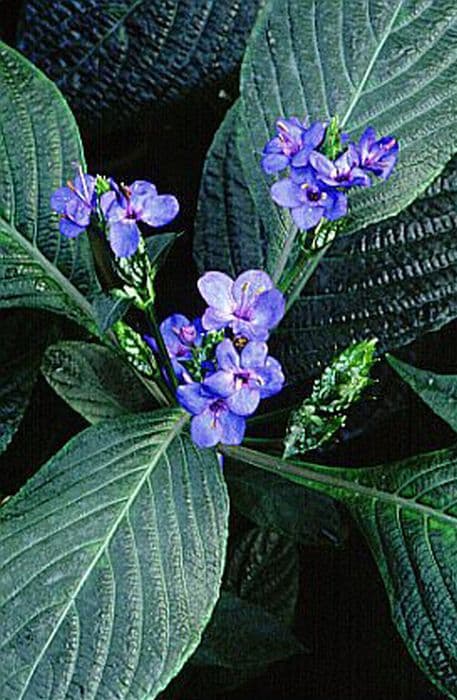Firespike Odontonema schomburgkianum

ABOUT
Odontonema schomburgkianum, commonly known as Firespike, is a visually striking plant characterized by its lush, glossy green leaves that are elongated with pointy tips, giving them a lance-like appearance. This vibrant foliage creates a dense, bushy growth that serves as a beautiful backdrop for its most distinguishing feature: the stunning flowers. The Firespike boasts a profusion of vivid, tubular blooms that are typically a deep, rich red, and these eye-catching flowers are arranged in upright, terminal clusters at the ends of the branches. These inflorescences are highly attractive to hummingbirds, butterflies, and other pollinators. The striking contrast between the dark green foliage and the bright red flowers makes the Firespike a popular choice for gardeners seeking to add a splash of color to their landscapes. Its tropical origins are often reflected in its overall appearance, suggesting a preference for warm, humid environments. The plant's ability to bloom in partially shaded to sunny conditions reveals its versatility, allowing it to be incorporated into a variety of garden settings. Firespike, with its showy flowers and attractive foliage, is often used as an ornamental plant to enhance the visual appeal of gardens and landscapes, creating eye-catching displays that persist throughout its flowering season.
About this plant
 Names
NamesFamily
Acanthaceae
Synonyms
Firespike, Cardinal Guard, Scarlet Flame
Common names
Odontonema schomburgkianum.
 Toxicity
ToxicityTo humans
Firespike, commonly known as Odontonema schomburgkianum, is not widely reported to be toxic to humans. However, as with many plants, sensitivity to its components can vary among individuals, and ingesting any part of the plant may cause adverse reactions in some people. If you suspect poisoning, symptoms might include gastrointestinal discomfort, such as nausea, vomiting, or diarrhea. If any part of the plant is ingested, it is advisable to seek medical attention, especially for children and pets who might be more susceptible to the potential toxins.
To pets
Firespike, commonly known as Odontonema schomburgkianum, has not been documented extensively for toxicity in pets. However, pets, like humans, can have varying sensitivities to plant materials, and ingestion of the plant could potentially cause mild gastrointestinal upset, with symptoms including vomiting or diarrhea. If your pet ingests any part of the plant and exhibits these or other symptoms, it is important to consult a veterinarian for appropriate care and treatment.
 Characteristics
CharacteristicsLife cycle
Perennials
Foliage type
Evergreen
Color of leaves
Green
Flower color
Red
Height
3-6 feet [0.91-1.83 meters]
Spread
2-4 feet [0.60-1.22 meters]
Plant type
Shrub
Hardiness zones
10
Native area
South America
Benefits
 General Benefits
General Benefits- Attracts Wildlife: Odontonema schomburgkianum, commonly known as Firespike, is known for attracting hummingbirds, butterflies, and other pollinators to the garden due to its bright red tubular flowers.
- Aesthetic Appeal: Firespike adds a splash of color to landscapes with its vivid flowers and serves as an eye-catching ornamental plant.
- Easy to Grow: This plant is relatively easy to care for, requiring minimal maintenance once established, making it suitable for gardeners of all skill levels.
- Drought Tolerant: Firespike is drought-resistant once established, making it a good choice for gardens in arid regions or for those looking to conserve water.
- Versatile Landscaping: It can be used in various ways in landscaping, including as a backdrop in borders, in hedges, or as a standalone specimen.
- Year-Round Interest: In tropical and subtropical regions, Firespike can bloom throughout the year, providing consistent visual interest.
- Privacy Screen: When planted in groups, it can act as an informal screen or hedge, providing privacy and reducing noise.
- Shade Tolerance: Firespike can tolerate partial shade, allowing it to be incorporated into a variety of garden designs that have some level of shade.
 Medical Properties
Medical PropertiesThis plant is not used for medical purposes.
 Air-purifying Qualities
Air-purifying QualitiesThis plant is not specifically known for air purifying qualities.
 Other Uses
Other Uses- Firescaping: Firespike is often used in firescaping due to its high moisture content, which can help in creating a defensible space against wildfires.
- Butterfly Gardening: Gardeners plant Firespike to attract butterflies, as it serves as an excellent nectar source for various butterfly species.
- Hummingbird Attraction: The bright red flowers of Firespike are known to be a magnet for hummingbirds, making it a favorite for bird enthusiasts.
- Focal Point in Landscaping: Due to its striking appearance and tall flower spikes, Firespike can be used as a centerpiece in a garden design.
- Erosion Control: The robust root system of Firespike can help stabilize soil and prevent erosion on slopes or banks.
- Living Fence: When planted in a row or hedge formation, Firespike can create a semi-permeable privacy screen or living fence.
- Floral Arrangements: The long-lasting flowers of Firespike are sometimes cut and used in fresh floral arrangements or bouquets.
- Container Gardening: Firespike can be grown in large pots or containers for patios or balcony gardens, adding a tropical flair.
- Educational Use: Firespike can be included in botanical gardens or educational programs to teach about pollinators and their relationships with plants.
- Cultural Significance: In some cultures, certain types of Firespike may be used in ceremonial or decorative purposes due to their vivid color and striking appearance.
Interesting Facts
 Feng Shui
Feng ShuiThe firespike is not used in Feng Shui practice.
 Zodiac Sign Compitability
Zodiac Sign CompitabilityThe firespike is not used in astrology practice.
 Plant Symbolism
Plant Symbolism- Elegance: The Odontonema schomburgkianum, commonly known as Firespike, is often associated with elegance due to its striking appearance and beautiful, vibrant flowers.
- Attraction: Firespikes are known for their ability to attract hummingbirds and butterflies, symbolizing a magnetism or allure that can be attributed to a person or space that is inviting to others.
- Vitality: With its robust growth and vivid red flowers, Firespike represents energy and life force, often used to signify vibrant health or a lively environment.
- Warmth: The warm red hue of the Firespike blooms can symbolize passion, warmth, and comfort, suggesting a welcoming and nurturing presence.
 Water
WaterFirespike, the common name for Odontonema schomburgkianum, prefers consistent moisture and should be watered deeply once a week, with adjustments made for rainfall or high temperatures. This typically means providing about 1 gallon of water for an established plant each week. In extremely hot weather, you may need to water twice a week, ensuring the top inch of soil is moist but not soggy. Younger plants or those in containers may require more frequent watering to maintain soil moisture, particularly if they are in full sun or if the weather is very hot.
 Light
LightFirespike thrives in a location with full sun to partial shade. For best growth, provide it with at least six hours of direct sunlight daily. If you're planting it indoors, place it near a sunny window where it receives ample light throughout the day but is shielded from the harsh midday sun, which can be too intense.
 Temperature
TemperatureFirespike does well in warmer climates and can tolerate a range of temperatures. The ideal temperature for this plant falls between 60°F and 85°F. It can survive minimum temperatures down to around 50°F but should be protected from frost, as temperatures below 32°F can cause damage to the plant.
 Pruning
PruningPrune your Firespike periodically to maintain its shape and encourage bushier growth. Snip off spent flower spikes to promote more blooms. It is best to prune the plant in late winter or early spring, before new growth begins. Annual pruning can also help rejuvenate older plants.
 Cleaning
CleaningAs needed
 Soil
SoilFirespike requires well-draining soil that is rich in organic matter. A mixture of peat, pine bark, and perlite in equal parts is suitable for optimal growth. The preferred soil pH for Firespike should be slightly acidic to neutral, ranging from 6.0 to 7.0.
 Repotting
RepottingRepot Firespike typically every 2-3 years or when the plant outgrows its current container. It is best to repot in the spring or early summer to allow the plant to establish in its new pot during the growing season.
 Humidity & Misting
Humidity & MistingFirespike thrives in moderate to high humidity levels, ideally between 50-70%. If the indoor air is too dry, using a humidifier or placing a water tray near the plant can help maintain adequate humidity.
 Suitable locations
Suitable locationsIndoor
Provide bright indirect light and keep soil moist for optimal indoor growth.
Outdoor
Plant in partial shade and protect from strong winds outdoors.
Hardiness zone
9-11 USDA
 Life cycle
Life cycleThe Firespike plant (Odontonema schomburgkianum) begins its life cycle as a seed, which germinates in warm, moist soil conditions, typically taking several weeks. Once germinated, the seedling stage is characterized by the emergence of a few initial leaves. As the Firespike enters the vegetative growth stage, it develops a stronger root system and produces more leaves, preparing for the flowering phase. During the flowering stage, Firespike displays vibrant red, tubular flowers that attract hummingbirds and butterflies for pollination. After pollination, the plant will produce small fruits containing seeds, which can then be dispersed to start a new cycle. The plant is perennial, meaning that it can live for several years, going through repeated cycles of growth and reproduction within suitable climates.
 Propogation
PropogationPropogation time
Spring-Early Summer
The most popular method of propagation for the Firespike (Odontonema schomburgkianum) is through semi-ripe stem cuttings. Typically, the best time to propagate is during late spring or early summer when the plant's growth is most vigorous. To propagate, a gardener should select a healthy stem and cut a piece approximately 4 to 6 inches (about 10 to 15 centimeters) long, making sure it includes at least a couple of leaf nodes. The lower leaves should be removed, and the cut end can be dipped in rooting hormone powder to encourage root growth. The cutting should then be placed in a pot filled with a well-draining soil mixture and kept moist but not waterlogged. It's important to provide the cutting with warmth and high humidity, such as placing a plastic bag over the pot to create a mini greenhouse effect until the roots are established.
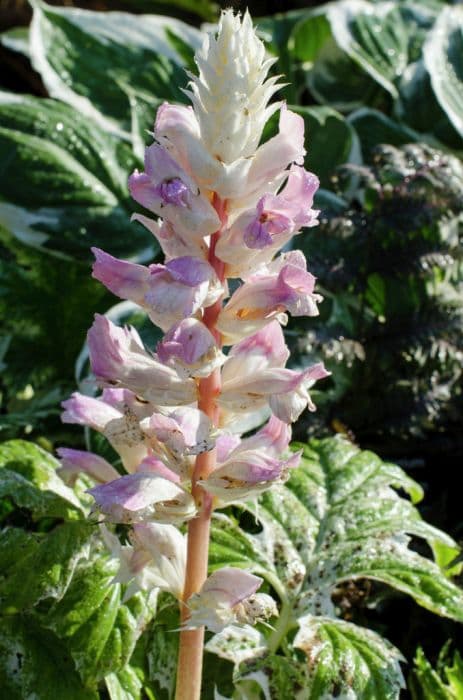
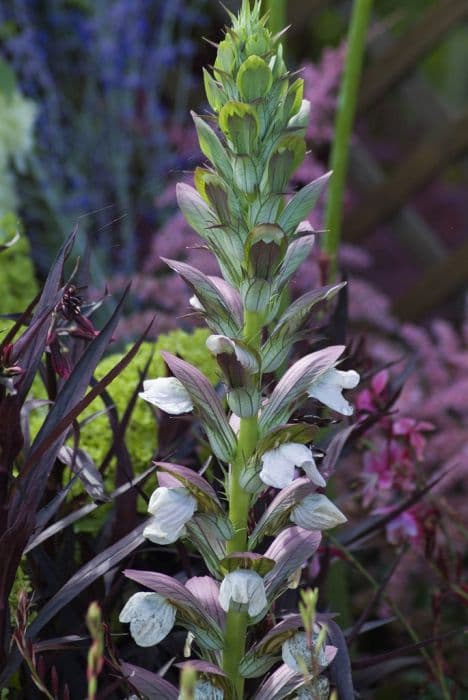


![Black-eyed Susan [Sunny Suzy Red-Orange]](/_next/image?url=https%3A%2F%2Fplants-admin.emdemapps.com%2Fimages%2Fplants%2F%2Fimages%2F607ea5891ee3f.jpg&w=640&q=75)
